Short Book Reviews
Hanna Kryszewska, Poland
Hanna Kryszewska is a teacher, teacher trainer, trainer of trainers. She is a senior lecturer at the University of Gdańsk, and EU Teacher Training College where she trains pre-service teachers. She is co-author of resource books: Learner Based Teaching, OUP, Towards Teaching, Heinemann, The Standby Book, CUP, Language Activities for Teenagers, CUP and a course book series for secondary schools: ForMat, Macmillan. She is also co-author of a video based teacher training course: Observing English Lessons. Hania is a Pilgrims trainer and editor of HLT Magazine. E-mail: hania.kryszewska@pilgrims.co.uk
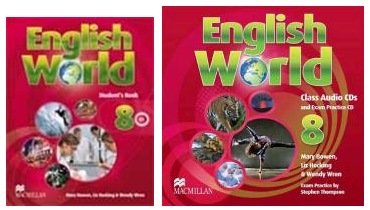
English World 8: Student’s Book. M. Bowen, L. Hocking and W. Wren. Macmillan. (2012) ISBN 978-0-230-03253-8, pp.136. This course book is part 8 of a new ten level general English course which is aimed at children at primary level and teenagers at a secondary level. (NB The blurb on the back states that the book in question is aimed at the secondary level – B1 according to CEFR). The course has a skills based approach which is the springboard for grammar and vocabulary work in context. The choice of texts and genres is very varied and interesting, with a strong CLIL element. The layout of the book and the visual materials are varied and pleasing to the eye. The full course comes complete with the usual components like the workbook with a CD-ROM, the teacher’s guide, audio CD’s, an exam practice book, as well as with a teacher’s digibook. Personally I am not sure which country and what pedagogical set-up the whole course is intended for. In my experience teachers and educators in many countries prefer if every level of education, early primary, primary, early secondary and secondary, uses a new course specifically written for the given age group. Learning or teaching from the same course, no matter how good it is, for ten consecutive years may become tedious and demotivating for both learners and the teachers. However, if the whole course is seen as a ‘menu’ to choose from and only some parts are to be used, e.g. on a summer course, then the individual books are a good choice and good value for money.
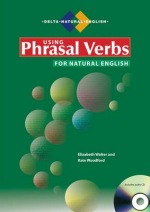
Using Phrasal Verbs for Natural English. E. Walter and K. Woodford. (2011) DELTA Publishing. ISBN 978-1-905085-53-5, pp 128. This handbook has been published in the DELTA Natural English series and it taps into an area that is one of the teachers’ and learners’ nightmares: phrasal verbs. Although a nightmare, phrasal verbs are vital if the learners want to understand and speak everyday English. Unlike many books devoted to phrasal verbs, this publication is not organised around the key verb, e.g. make, take, get but around topics such as: health, relationships, problems, emotions etc. In the unit devoted to health, students will learn and practise phrasal verbs like: come down with ( a cold), come out in (spots), flare up, pick up ( a bug), (a bug) going round. Phrasal verbs in the book are presented in natural and memorable contexts which help memorising and using phrasal verbs actively. The units I like best are devoted to phrasal verbs and register in general, then come formal, informal and very informal phrasal verbs, and finally positive and negative meanings in phrasal verbs. Units on nouns formed from phrasal verbs, phrasal verbs in idioms and fixed phrases are also worth dipping into. The book is aimed at B1-B2 levels according to CEFR, but I am sure teachers can become inspired and adapt some of the ideas or activities for lower levels. The book comes complete with a CD. The book is highly recommended as a supplementary material for ELT classes.
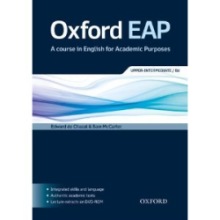
Oxford EAP. A course in English for Academic Purposes. E. de Chazal and S. McCarter. Oxford. (2012). ISBN 978-0-19-400178-6, pp240. This course has been designed with future students at the tertiary level in mind. It prepares young adults to study in English at university level. The course book uses academic texts published by Oxford University Press, as well as authentic video and audio extracts to present academic language in context and to practise the four language skills. The book has a strong lexical component focusing among others on wordbuilding, cohesive devices, deciding on the formality of synonyms, language of comparison and contrast, and noun phrases in note taking. As for grammar it focuses on areas particularly relevant to academic discourse such as passive versus active voice, wh- clauses in spoken descriptions, or cause and effect language. The course provides help in developing essential academic skills such as critical thinking, citation and referencing, note taking, summarising and paraphrasing. The learners are encouraged to become independent learners and to use the skills they have acquired on the course to study the discipline of their choice. The course is aimed at B2/C1 CEFR level and according to the blurb it will prepare the learners to use English on a number of courses from pre-sessional courses to postgraduate research. Personally I believe many students would need a C1/C2 course which I hope will follow as continuation of this impressive course.
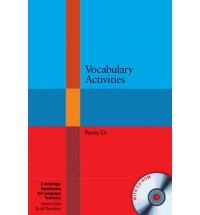
Vocabulary Activities. P. Ur. Cambridge University Press. (2012) ISBN-978-0-521-18114-3, pp.262. This book has appeared in the well established Cambridge Handbooks for Language Teachers series edited by series editor Scott Thornbury. The book in question was written by Penny Ur, the previous editor of the series. There are many resource books on teaching and practising vocabulary, but teachers always need new inspiring ideas to help their learners learn vocabulary. The more so, as we now have more data about lexis thanks to computer analysis of the language corpus. The activities in the book fall into five chapters: vocabulary expansion, vocabulary review, advanced vocabulary study, vocabulary testing and mainly for fun. Some of the activities in the book are ELT classics, others are truly refreshing and innovative. My favourite activities in the book look at how the same word can be different parts of speech, comparing proverbs, textspeak, what we can learn from dictionaries, comparing collocations and what’s the best way to translate, just to name a few. I am sure that very teachers will find activities suitable for their teenage or adult learners of all levels. The resource book comes with a CD-ROM contains print-ready materials which are ready for classroom use.
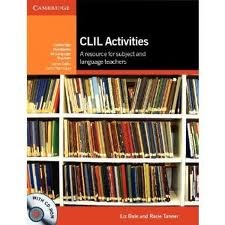
CLIL Activities. L. Dale and R.Tanner. (2012) Cambridge University Press. ISBN 978-0-521-14984-6, pp 284. This book has appeared in the well established Cambridge Handbooks for Language Teachers series edited and consulted by series editor Scott Thornbury. CLIL has been a heatedly debated development in ELT; many teachers are suspicious of or very resistant to CLIL while some see it as the way to go and see their professional development in it. Observing the trend over the years we can see that CLIL is here to stay, and more and more publications on CLIL prove it. CLIL Activities stands out when compared to other publications on the subject. It shows that the resource book was written by experienced CLIL teachers and teacher trainers. The first chapter: background to CLIL is very informative and maps out CLIL very clearly; a must-read for supporters and opponents of CLIL. In a separate section teachers will find extracts from authentic school teaching materials coming from a variety of subjects, e.g. geography, maths, history and ICT. The activities themselves are easy to follow thanks to step-by-step instructions which are easy to implement or adapt. They require minimal preparation thanks to the accompanying CD-ROM with materials which can be printed out or projected for immediate use in class. This is a truly inspiring publication.
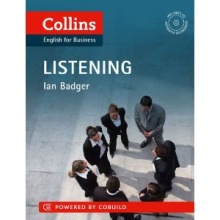
Listening. B1+ Intermediate. English for Life. I. Badger. (2012) Collins. ISBN 978-1-84769-372-3, pp 124. This book comes from a publishing house which is related to the COBUILD project, which guarantees that the language and texts which are introduced in the book are authentic. This is really the case. The listenings are different from course book English and introduce the learners to the English they will hear in the real world, such as talking about yourself and where you come from, adapting to local customs, getting tourist information or obtaining hotel information as said by non-native speakers from all over the world. There are many sample sentences which come from the 4.5-billion-word Collins Corpus which is the world’s largest database of the English language. The book is aimed at B1+ level according to CEFR, and is suitable for self-study and classroom use. The book and accompanying CD will surely help the learners improve their listening skills in real life situations.
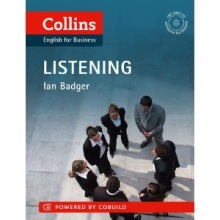
Listening. English for Business. I. Badger. (2011) Collins. ISBN 978-0-00-742321-7, pp 124. This book comes from the same author who wrote the very successful Listening. B1+ Intermediate. English for Life. (see above) and comes from a publishing house connected to the COBUILD project, so the texts show samples real business English. The book falls into five chapters: everyday business communication, working internationally, outside the office, everyday business matters, calls and cultural considerations. The recordings and accompanying activities will help practising and future businessmen to understand what people, and their business partners in particular, are saying in negotiations, when socialising, during conference calls, and using voicemails etc.. What will help them a lot is the fact that the recordings feature both native and non-native speakers of English. The book has a very informative mini-dictionary which contains the most difficult words introduced in each unit; it is accompanied by a CD and transcripts of all the recordings are to be found at the end of the book. The book is suitable for self-study and classroom use for learners at B1-C2 level according to CEFR. I really look forward to seeing the other publications in the series on speaking, writing and grammar practice.

Please check the Methodology and Language for Primary Teachers course at Pilgrims website.
Please check the Methodology and Language for Secondary Teachers course at Pilgrims website.
Please check the Teaching Advanced Students course at Pilgrims website.
Please check the Methodology for Teaching Spoken Grammar and English course at Pilgrims website.
Please check the reative Methodology for Training Business People course at Pilgrims website.
Please check the CLIL: Content and Methodology for Secondary Teachers course at Pilgrims website.
Please check the CLIL General Methodology course at Pilgrims website.
Please check the CLIL Materials Development (Advanced Level) course at Pilgrims website.


|